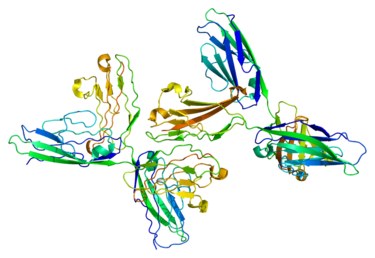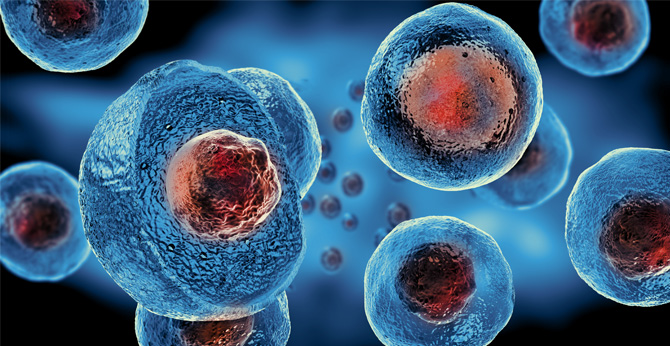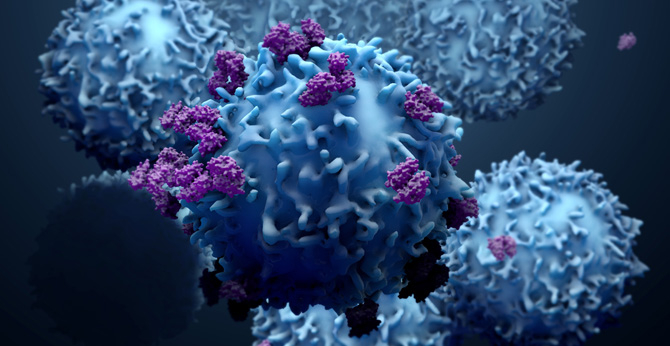Creative Biolabs has a tradition of commitment. To achieve efficient execution and regulatory approval, we offer careful considerations of your program for the development of a cellular or gene therapy product – now and in the future.
EXPLORE MORE HighlightsWe focus on unmet needs and develop novel cellular and gene drugs and solutions that offer significant benefits over existing options.
EXPLORE MORE HighlightsThe advent of Chimeric Antigen Receptor T-cell (CAR-T) therapies has revolutionized the field of oncology, providing new avenues for treating various forms of cancer. Our 20 years of experience in the biotechnology sector have equipped us with the expertise and technological capabilities to support the entire lifecycle of CAR-T products, from early development to commercialization.
EXPLORE MORETo accelerate advanced breakthroughs of your projects, we offer broad range of platforms which enable our clients be free to tackle problems with cutting-edge technologies from different angles and in different methods.
EXPLORE MORE HighlightsUse the resources in our library to help you understand your options and make critical decisions for your study. We offer oncolytic virus, CAR-T, and dendritic cell related documents, as well as newsletter. If you don't find the answers you're looking for, contact us for additional assistance.
EXPLORE MORE HighlightsGet a real taste and understanding of the business and culture of one of the world's great research-based cellular and gene therapy discovery and development companies.
EXPLORE MOREAll products and services are For Research Use Only and CANNOT be used in the treatment or diagnosis of disease.
Neural cell adhesion molecule (NCAM), also called CD56, is a homophilic binding glycoprotein expressed on the surface of neurons, glia, skeletal muscle and natural killer cells. NCAM has been implicated as having a role in cell–cell adhesion, neurite outgrowth, synaptic plasticity, and learning and memory. NCAM is thought to signal to induce neurite outgrowth via the fibroblast growth factor receptor (FGFR) and act upon the p59Fyn signaling pathway. Tumors that are CD56-positive are myeloma, myeloid leukemia, neuroendocrine tumors, Wilms' tumor, neuroblastoma, NK/T cell lymphomas, pancreatic acinar cell carcinoma, pheochromocytoma, paraganglioma, small cell lung carcinoma, and the Ewing's sarcoma family of tumors. NCAM has been used as a target molecule for experimental antibody-based immunotherapy. Successful radioimmunolocalisation of metastases was demonstrated after giving injections of NCAM-binding 123J-UJ13a or 131J-UJ13a radioimmunoconjugates to children with neuroblastoma. Patients with small cell lung cancer were treated with the anti-NCAM immunotoxine huN901-DM1 in two different clinical studies, revealing acceptable toxicity and signs of clinical response.
 Associated Disease
Associated Disease Loading...
Loading...
| CAT | Product Name | Target Species | Antibody Clone | Antibody Host | Receptor Construction | Vector Type | Targeting Cell Type | CAR Vector Type | Inquiry & Datasheet |
| CAR-ZP124 | Anti-CD56 (N901) h(CD28-CD3ζ) CAR, pCDCAR1 | Human | N901 | Mouse | scFv-CD28-CD3ζ | Lentiviral vector | T cell | Add to Cart Datasheet | |
| CAR-ZP125 | Anti-CD56 (N901) h(41BB-CD3ζ) CAR, pCDCAR1 | Human | N901 | Mouse | scFv-4-1BB-CD3ζ | Lentiviral vector | T cell | Add to Cart Datasheet | |
| CAR-ZP314 | Anti-CD56 (CAR-ZP314) h(CD28-CD3ζ) CAR, pCDCAR1 | Human | CAR-ZP314 | Humanized | scFv-CD28-CD3ζ | Lentiviral vector | NK cell | Add to Cart Datasheet | |
| CAR-ZP315 | Anti-CD56 (CAR-ZP315) h(41BB-CD3ζ) CAR, pCDCAR1 | Human | CAR-ZP315 | Humanized | scFv-4-1BB-CD3ζ | Lentiviral vector | NK cell | Add to Cart Datasheet | |
| CAR-ZP5773 | Anti-CD56 (124D4) h(CD28-CD3ζ) CAR, pCDCAR1 | Human | 124D4 | Mouse | scFv-CD28-CD3ζ | Lentiviral vector | T cell | Add to Cart Datasheet | |
| CAR-ZP5774 | Anti-CD56 (124D4) h(41BB-CD3ζ) CAR, pCDCAR1 | Human | 124D4 | Mouse | scFv-41BB-CD3ζ | Lentiviral vector | T cell | Add to Cart Datasheet | |
| CAR-ZP5775 | Anti-CD56 (5A2) h(CD28-CD3ζ) CAR, pCDCAR1 | Human | 5A2 | Mouse | scFv-CD28-CD3ζ | Lentiviral vector | T cell | Add to Cart Datasheet | |
| CAR-ZP5776 | Anti-CD56 (5A2) h(41BB-CD3ζ) CAR, pCDCAR1 | Human | 5A2 | Mouse | scFv-41BB-CD3ζ | Lentiviral vector | T cell | Add to Cart Datasheet | |
| CAR-ZP5779 | Anti-CD56 (NCAM1/784) h(CD28-CD3ζ) CAR, pCDCAR1 | Human | NCAM1/784 | Mouse | scFv-CD28-CD3ζ | Lentiviral vector | T cell | Add to Cart Datasheet | |
| CAR-ZP5780 | Anti-CD56 (NCAM1/784) h(41BB-CD3ζ) CAR, pCDCAR1 | Human | NCAM1/784 | Mouse | scFv-41BB-CD3ζ | Lentiviral vector | T cell | Add to Cart Datasheet | |
| CAR-ZP5781 | Anti-CD56 (T199) h(CD28-CD3ζ) CAR, pCDCAR1 | Human | T199 | Mouse | scFv-CD28-CD3ζ | Lentiviral vector | T cell | Add to Cart Datasheet | |
| CAR-ZP5782 | Anti-CD56 (T199) h(41BB-CD3ζ) CAR, pCDCAR1 | Human | T199 | Mouse | scFv-41BB-CD3ζ | Lentiviral vector | T cell | Add to Cart Datasheet | |
| CAR-ZP5783 | Anti-CD56 (NCAM1/795) h(CD28-CD3ζ) CAR, pCDCAR1 | Human | NCAM1/795 | Mouse | scFv-CD28-CD3ζ | Lentiviral vector | T cell | Add to Cart Datasheet | |
| CAR-ZP5784 | Anti-CD56 (NCAM1/795) h(41BB-CD3ζ) CAR, pCDCAR1 | Human | NCAM1/795 | Mouse | scFv-41BB-CD3ζ | Lentiviral vector | T cell | Add to Cart Datasheet | |
| CAR-ZP5785 | Anti-CD56 (SPM489) h(CD28-CD3ζ) CAR, pCDCAR1 | Human | SPM489 | Mouse | scFv-CD28-CD3ζ | Lentiviral vector | T cell | Add to Cart Datasheet | |
| CAR-ZP5786 | Anti-CD56 (SPM489) h(41BB-CD3ζ) CAR, pCDCAR1 | Human | SPM489 | Mouse | scFv-41BB-CD3ζ | Lentiviral vector | T cell | Add to Cart Datasheet | |
| CAR-ZP5787 | Anti-CD56 (8H3-6G10-10H3) h(CD28-CD3ζ) CAR, pCDCAR1 | Human | 8H3-6G10-10H3 | Mouse | scFv-CD28-CD3ζ | Lentiviral vector | T cell | Add to Cart Datasheet | |
| CAR-ZP5845 | Anti-CD56 (1C7) h(CD28-CD3ζ) CAR, pCDCAR1 | Human | 1C7 | Mouse | scFv-CD28-CD3ζ | Lentiviral vector | T cell | Add to Cart Datasheet | |
| CAR-ZP5846 | Anti-CD56 (1C7) h(41BB-CD3ζ) CAR, pCDCAR1 | Human | 1C7 | Mouse | scFv-41BB-CD3ζ | Lentiviral vector | T cell | Add to Cart Datasheet | |
| CAR-ZP5847 | Anti-CD56 (1A3) h(CD28-CD3ζ) CAR, pCDCAR1 | Human | 1A3 | Mouse | scFv-CD28-CD3ζ | Lentiviral vector | T cell | Add to Cart Datasheet |
| CAT | Product Name | Target Species | Antibody Clone | Fab-Host Animal | Vector Type | Targeting Cell Type | Inquiry & Datasheet |
| AbT-ZP040 | Anti-CD56 (Promiximab) h(Fab-γδ TCR) Antibody T Cell Receptor, pCDTCR1 | Human | Promiximab | Mouse | Lentiviral vector | T cell | Add to Cart Datasheet |
| XS-0722-ZP3977 | Anti-CD56 X CD3 BsAb Secreting T Cell Redirecting Vector (CD56xCD3) | Human | T Cells | Add to Cart Datasheet |
| CAT | Product Name | Host Cell Type | Target | scFv Clone | CAR Construction | CAR Cell Type | Inquiry & Datasheet |
| CARJ-ZP079 | Anti-CD56 (Promiximab) h(CD28-CD3ζ) CAR, Jurkat Cell | T lymphocyte | CD56 | Promiximab | scFv-CD28-CD3ζ | Add to Cart Datasheet | |
| CARJ-ZP080 | Anti-CD56 (Promiximab) h(4-1BB-CD3ζ) CAR, Jurkat Cell | T lymphocyte | CD56 | Promiximab | scFv-41BB-CD3ζ | Add to Cart Datasheet | |
| XS-0622-ZP40 | Anti-CD56 (XP5-40) h(CD28-CD3ζ) CAR-iT Cells | CAR-iT Cells | CD56 | XP5-40 | scFv-CD28-CD3ζ | Add to Cart Datasheet | |
| XS-0622-ZP472 | Anti-CD56 (XP5-472) h(CD28-CD3ζ) CAR-iT Cells | CAR-iT Cells | CD56 | XP5-472 | scFv-CD28-CD3ζ | Add to Cart Datasheet | |
| XS-0622-ZP698 | Anti-CD56 (XP5-698) h(4-1BB-CD3ζ) CAR-iT Cells | CAR-iT Cells | CD56 | XP5-698 | scFv-4-1BB-CD3ζ | Add to Cart Datasheet | |
| XS-0622-ZP1130 | Anti-CD56 (XP5-1130) h(4-1BB-CD3ζ) CAR-iT Cells | CAR-iT Cells | CD56 | XP5-1130 | scFv-4-1BB-CD3ζ | Add to Cart Datasheet | |
| XS-0622-ZP1356 | Anti-CD56 (XP5-1356) h(CD28-CD3ζ) CAR-Treg Cells | CAR-Treg Cells | CD56 | XP5-1356 | scFv-CD28-CD3ζ | Add to Cart Datasheet | |
| XS-0622-ZP1788 | Anti-CD56 (XP5-1788) h(CD28-CD3ζ) CAR-Treg Cells | CAR-Treg Cells | CD56 | XP5-1788 | scFv-CD28-CD3ζ | Add to Cart Datasheet | |
| XS-0622-ZP2014 | Anti-CD56 (XP5-2014) h(4-1BB-CD3ζ) CAR-Treg Cells | CAR-Treg Cells | CD56 | XP5-2014 | scFv-4-1BB-CD3ζ | Add to Cart Datasheet | |
| XS-0622-ZP2446 | Anti-CD56 (XP5-2446) h(4-1BB-CD3ζ) CAR-Treg Cells | CAR-Treg Cells | CD56 | XP5-2446 | scFv-4-1BB-CD3ζ | Add to Cart Datasheet | |
| XS-0522-ZP698 | Anti-CD56 (XP5-698) h(4-1BB-CD3ζ) CAR-CIK Cells | CAR-CIK Cells | CD56 | XP5-698 | scFv-4-1BB-CD3ζ | Add to Cart Datasheet | |
| XS-0522-ZP1130 | Anti-CD56 (XP5-1130) h(4-1BB-CD3ζ) CAR-CIK Cells | CAR-CIK Cells | CD56 | XP5-1130 | scFv-4-1BB-CD3ζ | Add to Cart Datasheet | |
| XS-0522-ZP1356 | Anti-CD56 (XP5-1356) h(CD28-CD3ζ) CAR-γδ T Cells | CAR-γδ T Cells | CD56 | XP5-1356 | scFv-CD28-CD3ζ | Add to Cart Datasheet | |
| XS-0522-ZP2014 | Anti-CD56 (XP5-2014) h(4-1BB-CD3ζ) CAR-γδ T Cells | CAR-γδ T Cells | CD56 | XP5-2014 | scFv-4-1BB-CD3ζ | Add to Cart Datasheet | |
| XS-0522-ZP2446 | Anti-CD56 (XP5-2446) h(4-1BB-CD3ζ) CAR-γδ T Cells | CAR-γδ T Cells | CD56 | XP5-2446 | scFv-4-1BB-CD3ζ | Add to Cart Datasheet | |
| XS-1122-LX2970 | Anti-CD56 (X11X184) h(CD28-OX40-CD3ζ) CAR-Jurkat-NFAT-Luc | T lymphocyte | CD56 | X11X184 | scFv-CD28-OX40-CD3ζ | Add to Cart Datasheet | |
| XS-1122-LX2971 | Anti-CD56 (X11X185) h(CD28-OX40-CD3ζ) CAR-Jurkat-NFAT-Luc | T lymphocyte | CD56 | X11X185 | scFv-CD28-OX40-CD3ζ | Add to Cart Datasheet | |
| XS-1122-LX3367 | Anti-CD56 (X11X183) h(ICOS-4-1BB-CD3ζ) CAR-Jurkat-NFAT-Luc | T lymphocyte | CD56 | X11X183 | scFv-ICOS-4-1BB-CD3ζ | Add to Cart Datasheet | |
| XS-1122-LX3368 | Anti-CD56 (X11X184) h(ICOS-4-1BB-CD3ζ) CAR-Jurkat-NFAT-Luc | T lymphocyte | CD56 | X11X184 | scFv-ICOS-4-1BB-CD3ζ | Add to Cart Datasheet | |
| XS-1122-LX3369 | Anti-CD56 (X11X185) h(ICOS-4-1BB-CD3ζ) CAR-Jurkat-NFAT-Luc | T lymphocyte | CD56 | X11X185 | scFv-ICOS-4-1BB-CD3ζ | Add to Cart Datasheet |
| CAT | Product Name | Organism | Inquiry & Datasheet |
| CARD-LX114 | FITC-labeled Human CD56 CAR Detection Reagent, Fc Tag | Add to Cart Datasheet | |
| CARD-LX115 | FITC-labeled Human CD56 CAR Detection Reagent, His Tag | Add to Cart Datasheet |
| CAT | Product Name | Target Species | TCR Clone | Epitope | Allele | Vector Type | Inquiry & Datasheet |
| TriCAR-Z199 | Anti-CD56 TriCAR (Promiximab) (scFv-Sushi Domain-CD28-CD3ζ-PP2A-IL15-Anti-PD-L1), pCDCAR1 | Human | Promiximab | Lentiviral vector | Add to Cart Datasheet | ||
| TriCAR-Z200 | Anti-CD56 TriCAR (Promiximab) (scFv-Sushi Domain-4-1BB-CD3ζ-PP2A-IL15-Anti-PD-L1), pCDCAR1 | Human | Promiximab | Lentiviral vector | Add to Cart Datasheet |
| CAT | Product Name | Target Species | Antibody Clone | Host | Hinge | TM | ICD | Inquiry & Datasheet |
| CARMA-W2155 | Anti-CD56 (m900) ICD(CD147) CAR-MA Plasmid, pCDCAR1 | Human | m900 | Mouse | IgG1 | CD147 | CD147 | Add to Cart Datasheet |
| CARMA-W2156 | Anti-CD56 (m900) ICD(CD86+FcγRI) CAR-MA Plasmid, pCDCAR1 | Human | m900 | Mouse | CD8 | CD8 | CD86+FcγRI | Add to Cart Datasheet |
| CARMA-W2157 | Anti-CD56 (m900) ICD(CD3ζ) CAR-MA Plasmid, pCDCAR1 | Human | m900 | Mouse | CD8 | CD8 | CD3ζ | Add to Cart Datasheet |
| CARMA-W2158 | Anti-CD56 (m900) ICD(Megf10) CAR-MA Plasmid, pCDCAR1 | Human | m900 | Mouse | CD8 | CD8 | Megf10 | Add to Cart Datasheet |
| CARMA-W2159 | Anti-CD56 (m900) ICD(FcRɣ) CAR-MA Plasmid, pCDCAR1 | Human | m900 | Mouse | CD8 | CD8 | FcRɣ | Add to Cart Datasheet |
| CARMA-W2160 | Anti-CD56 (m900) ICD(FcRɣ+PI3K) CAR-MA Plasmid, pCDCAR1 | Human | m900 | Mouse | CD8 | CD8 | FcRɣ+PI3K | Add to Cart Datasheet |
| CARMA-W2161 | Anti-CD56 (N901) ICD(CD147) CAR-MA Plasmid, pCDCAR1 | Human | N901 | Mouse | IgG1 | CD147 | CD147 | Add to Cart Datasheet |
| CARMA-W2162 | Anti-CD56 (N901) ICD(CD86+FcγRI) CAR-MA Plasmid, pCDCAR1 | Human | N901 | Mouse | CD8 | CD8 | CD86+FcγRI | Add to Cart Datasheet |
| CARMA-W2163 | Anti-CD56 (N901) ICD(CD3ζ) CAR-MA Plasmid, pCDCAR1 | Human | N901 | Mouse | CD8 | CD8 | CD3ζ | Add to Cart Datasheet |
| CARMA-W2164 | Anti-CD56 (N901) ICD(Megf10) CAR-MA Plasmid, pCDCAR1 | Human | N901 | Mouse | CD8 | CD8 | Megf10 | Add to Cart Datasheet |
| CARMA-W2165 | Anti-CD56 (N901) ICD(FcRɣ) CAR-MA Plasmid, pCDCAR1 | Human | N901 | Mouse | CD8 | CD8 | FcRɣ | Add to Cart Datasheet |
| CARMA-W2166 | Anti-CD56 (N901) ICD(FcRɣ+PI3K) CAR-MA Plasmid, pCDCAR1 | Human | N901 | Mouse | CD8 | CD8 | FcRɣ+PI3K | Add to Cart Datasheet |
| CARMA-W2167 | Anti-CD56 (124D4) ICD(CD147) CAR-MA Plasmid, pCDCAR1 | Human | 124D4 | Mouse | IgG1 | CD147 | CD147 | Add to Cart Datasheet |
| CARMA-W2168 | Anti-CD56 (124D4) ICD(CD86+FcγRI) CAR-MA Plasmid, pCDCAR1 | Human | 124D4 | Mouse | CD8 | CD8 | CD86+FcγRI | Add to Cart Datasheet |
| CARMA-W2169 | Anti-CD56 (124D4) ICD(CD3ζ) CAR-MA Plasmid, pCDCAR1 | Human | 124D4 | Mouse | CD8 | CD8 | CD3ζ | Add to Cart Datasheet |
| CARMA-W2170 | Anti-CD56 (124D4) ICD(Megf10) CAR-MA Plasmid, pCDCAR1 | Human | 124D4 | Mouse | CD8 | CD8 | Megf10 | Add to Cart Datasheet |
| CARMA-W2171 | Anti-CD56 (124D4) ICD(FcRɣ) CAR-MA Plasmid, pCDCAR1 | Human | 124D4 | Mouse | CD8 | CD8 | FcRɣ | Add to Cart Datasheet |
| CARMA-W2172 | Anti-CD56 (124D4) ICD(FcRɣ+PI3K) CAR-MA Plasmid, pCDCAR1 | Human | 124D4 | Mouse | CD8 | CD8 | FcRɣ+PI3K | Add to Cart Datasheet |
| CARMA-W2173 | Anti-CD56 (5A2) ICD(CD147) CAR-MA Plasmid, pCDCAR1 | Human | 5A2 | Mouse | IgG1 | CD147 | CD147 | Add to Cart Datasheet |
| CARMA-W2184 | Anti-CD56 (T199) ICD(FcRɣ+PI3K) CAR-MA Plasmid, pCDCAR1 | Human | T199 | Mouse | CD8 | CD8 | FcRɣ+PI3K | Add to Cart Datasheet |
| CAT | Product Name | Target Species | Antibody Clone | Host | Hinge | TM | ICD | Inquiry & Datasheet |
| CARTHP-W2155 | Anti-CD56 (m900) ICD(CD147) CAR THP1 Cell Line | Human | m900 | Mouse | IgG1 | CD147 | CD147 | Add to Cart Datasheet |
| CARTHP-W2156 | Anti-CD56 (m900) ICD(CD86+FcγRI) CAR THP1 Cell Line | Human | m900 | Mouse | CD8 | CD8 | CD86+FcγRI | Add to Cart Datasheet |
| CARTHP-W2157 | Anti-CD56 (m900) ICD(CD3ζ) CAR THP1 Cell Line | Human | m900 | Mouse | CD8 | CD8 | CD3ζ | Add to Cart Datasheet |
| CARTHP-W2158 | Anti-CD56 (m900) ICD(Megf10) CAR THP1 Cell Line | Human | m900 | Mouse | CD8 | CD8 | Megf10 | Add to Cart Datasheet |
| CARTHP-W2159 | Anti-CD56 (m900) ICD(FcRɣ) CAR THP1 Cell Line | Human | m900 | Mouse | CD8 | CD8 | FcRɣ | Add to Cart Datasheet |
| CARTHP-W2160 | Anti-CD56 (m900) ICD(FcRɣ+PI3K) CAR THP1 Cell Line | Human | m900 | Mouse | CD8 | CD8 | FcRɣ+PI3K | Add to Cart Datasheet |
| CARTHP-W2161 | Anti-CD56 (N901) ICD(CD147) CAR THP1 Cell Line | Human | N901 | Mouse | IgG1 | CD147 | CD147 | Add to Cart Datasheet |
| CARTHP-W2162 | Anti-CD56 (N901) ICD(CD86+FcγRI) CAR THP1 Cell Line | Human | N901 | Mouse | CD8 | CD8 | CD86+FcγRI | Add to Cart Datasheet |
| CARTHP-W2163 | Anti-CD56 (N901) ICD(CD3ζ) CAR THP1 Cell Line | Human | N901 | Mouse | CD8 | CD8 | CD3ζ | Add to Cart Datasheet |
| CARTHP-W2164 | Anti-CD56 (N901) ICD(Megf10) CAR THP1 Cell Line | Human | N901 | Mouse | CD8 | CD8 | Megf10 | Add to Cart Datasheet |
| CARTHP-W2165 | Anti-CD56 (N901) ICD(FcRɣ) CAR THP1 Cell Line | Human | N901 | Mouse | CD8 | CD8 | FcRɣ | Add to Cart Datasheet |
| CARTHP-W2166 | Anti-CD56 (N901) ICD(FcRɣ+PI3K) CAR THP1 Cell Line | Human | N901 | Mouse | CD8 | CD8 | FcRɣ+PI3K | Add to Cart Datasheet |
| CARTHP-W2167 | Anti-CD56 (124D4) ICD(CD147) CAR THP1 Cell Line | Human | 124D4 | Mouse | IgG1 | CD147 | CD147 | Add to Cart Datasheet |
| CARTHP-W2168 | Anti-CD56 (124D4) ICD(CD86+FcγRI) CAR THP1 Cell Line | Human | 124D4 | Mouse | CD8 | CD8 | CD86+FcγRI | Add to Cart Datasheet |
| CARTHP-W2169 | Anti-CD56 (124D4) ICD(CD3ζ) CAR THP1 Cell Line | Human | 124D4 | Mouse | CD8 | CD8 | CD3ζ | Add to Cart Datasheet |
| CARTHP-W2170 | Anti-CD56 (124D4) ICD(Megf10) CAR THP1 Cell Line | Human | 124D4 | Mouse | CD8 | CD8 | Megf10 | Add to Cart Datasheet |
| CARTHP-W2171 | Anti-CD56 (124D4) ICD(FcRɣ) CAR THP1 Cell Line | Human | 124D4 | Mouse | CD8 | CD8 | FcRɣ | Add to Cart Datasheet |
| CARTHP-W2172 | Anti-CD56 (124D4) ICD(FcRɣ+PI3K) CAR THP1 Cell Line | Human | 124D4 | Mouse | CD8 | CD8 | FcRɣ+PI3K | Add to Cart Datasheet |
| CARTHP-W2173 | Anti-CD56 (5A2) ICD(CD147) CAR THP1 Cell Line | Human | 5A2 | Mouse | IgG1 | CD147 | CD147 | Add to Cart Datasheet |
| CARTHP-W2174 | Anti-CD56 (5A2) ICD(CD86+FcγRI) CAR THP1 Cell Line | Human | 5A2 | Mouse | CD8 | CD8 | CD86+FcγRI | Add to Cart Datasheet |
| CAT | Product Name | Target Species | scFv Clone | Host | CAR Vector Name | CAR Vector Type | Targeting Diseases | Inquiry & Datasheet |
| MCAR-P079 | Anti-CD56 (Promiximab) h(CD28-CD3ζ) CAR-T Cells [Humanized Mouse (CD34+ HSC)] | Human | Promiximab | Mouse | pCDCAR1 | Lentiviral vector | Acute lymphoblastic leukemia (ALL) | Add to Cart Datasheet |
| MCAR-P080 | Anti-CD56 (Promiximab) h(4-1BB-CD3ζ) CAR-T Cells [Humanized Mouse (CD34+ HSC)] | Human | Promiximab | Mouse | pCDCAR1 | Lentiviral vector | Acute lymphoblastic leukemia (ALL) | Add to Cart Datasheet |
| MCAR-P940 | Anti-CD56 (NCAM-1) h(CD28-CD3ζ) CAR-T Cells [Mouse CAR-T Cells] | Mouse | NCAM-1 | Rat | pCDCAR1 | Lentiviral vector | Acute lymphoblastic leukemia (ALL) | Add to Cart Datasheet |
| MCAR-P1161 | Anti-CD56 (NCAM-1) h(4-1BB-CD3ζ) CAR-T Cells [Mouse CAR-T Cells] | Mouse | NCAM-1 | Rat | pCDCAR1 | Lentiviral vector | Acute lymphoblastic leukemia (ALL) | Add to Cart Datasheet |
| CAT | Product Name | Target Species | Antibody Clone | Host | CAR Construction | CAR Generation | Inquiry & Datasheet |
| XS-0822-YF8084 | VivoCAR™ Anti-Mouse CD56 (XW-724) m(41BB-CD28-CD3ζ) CAR mRNA Lipid Nanoparticle (LNP) | Mouse | XW-724 | Rabbit | scFv-CD28-41BB-CD3ζ | Third | Add to Cart Datasheet |
| XS-0822-YF8085 | VivoCAR™ Anti-Mouse CD56 (XW-725) m(41BB-CD28-CD3ζ) CAR mRNA Lipid Nanoparticle (LNP) | Mouse | XW-725 | Rabbit | scFv-CD28-41BB-CD3ζ | Third | Add to Cart Datasheet |
| XS-0822-YF8086 | VivoCAR™ Anti-Mouse CD56 (XW-726) m(41BB-CD28-CD3ζ) CAR mRNA Lipid Nanoparticle (LNP) | Mouse | XW-726 | Mouse | scFv-CD28-41BB-CD3ζ | Third | Add to Cart Datasheet |
| XS-0822-YF3480 | VivoCAR™ Anti-Human CD56 (XW-720) h(41BB-CD3ζ) CAR IVT mRNA | Human | XW-720 | Mouse | scFv-41BB-CD3ζ | Second | Add to Cart Datasheet |
| XS-0822-YF3481 | VivoCAR™ Anti-Human CD56 (XW-721) h(41BB-CD3ζ) CAR IVT mRNA | Human | XW-721 | Humanized | scFv-41BB-CD3ζ | Second | Add to Cart Datasheet |
| XS-0822-YF3482 | VivoCAR™ Anti-Human CD56 (XW-722) h(41BB-CD3ζ) CAR IVT mRNA | Human | XW-722 | Rabbit | scFv-41BB-CD3ζ | Second | Add to Cart Datasheet |
| XS-0822-YF3483 | VivoCAR™ Anti-Mouse CD56 (XW-723) m(41BB-CD3ζ) CAR IVT mRNA | Mouse | XW-723 | Rat | scFv-41BB-CD3ζ | Second | Add to Cart Datasheet |
| XS-0822-YF3484 | VivoCAR™ Anti-Mouse CD56 (XW-724) m(41BB-CD3ζ) CAR IVT mRNA | Mouse | XW-724 | Rabbit | scFv-41BB-CD3ζ | Second | Add to Cart Datasheet |
| XS-0822-YF3485 | VivoCAR™ Anti-Mouse CD56 (XW-725) m(41BB-CD3ζ) CAR IVT mRNA | Mouse | XW-725 | Rabbit | scFv-41BB-CD3ζ | Second | Add to Cart Datasheet |
| XS-0822-YF3486 | VivoCAR™ Anti-Mouse CD56 (XW-726) m(41BB-CD3ζ) CAR IVT mRNA | Mouse | XW-726 | Mouse | scFv-41BB-CD3ζ | Second | Add to Cart Datasheet |
| XS-0822-YF4400 | VivoCAR™ Anti-Human CD56 (XW-720) h(CD28-CD3ζ) CAR IVT mRNA | Human | XW-720 | Mouse | scFv-CD28-CD3ζ | Second | Add to Cart Datasheet |
| XS-0822-YF4401 | VivoCAR™ Anti-Human CD56 (XW-721) h(CD28-CD3ζ) CAR IVT mRNA | Human | XW-721 | Humanized | scFv-CD28-CD3ζ | Second | Add to Cart Datasheet |
| XS-0822-YF4402 | VivoCAR™ Anti-Human CD56 (XW-722) h(CD28-CD3ζ) CAR IVT mRNA | Human | XW-722 | Rabbit | scFv-CD28-CD3ζ | Second | Add to Cart Datasheet |
| XS-0822-YF4403 | VivoCAR™ Anti-Mouse CD56 (XW-723) m(CD28-CD3ζ) CAR IVT mRNA | Mouse | XW-723 | Rat | scFv-CD28-CD3ζ | Second | Add to Cart Datasheet |
| XS-0822-YF4404 | VivoCAR™ Anti-Mouse CD56 (XW-724) m(CD28-CD3ζ) CAR IVT mRNA | Mouse | XW-724 | Rabbit | scFv-CD28-CD3ζ | Second | Add to Cart Datasheet |
| XS-0822-YF5320 | VivoCAR™ Anti-Human CD56 (XW-720) h(41BB-CD28-CD3ζ) CAR IVT mRNA | Human | XW-720 | Mouse | scFv-CD28-41BB-CD3ζ | Third | Add to Cart Datasheet |
| XS-0822-YF5321 | VivoCAR™ Anti-Human CD56 (XW-721) h(41BB-CD28-CD3ζ) CAR IVT mRNA | Human | XW-721 | Humanized | scFv-CD28-41BB-CD3ζ | Third | Add to Cart Datasheet |
| XS-0822-YF5322 | VivoCAR™ Anti-Human CD56 (XW-722) h(41BB-CD28-CD3ζ) CAR IVT mRNA | Human | XW-722 | Rabbit | scFv-CD28-41BB-CD3ζ | Third | Add to Cart Datasheet |
| XS-0822-YF5323 | VivoCAR™ Anti-Mouse CD56 (XW-723) m(41BB-CD28-CD3ζ) CAR IVT mRNA | Mouse | XW-723 | Rat | scFv-CD28-41BB-CD3ζ | Third | Add to Cart Datasheet |
| XS-0822-YF5324 | VivoCAR™ Anti-Mouse CD56 (XW-724) m(41BB-CD28-CD3ζ) CAR IVT mRNA | Mouse | XW-724 | Rabbit | scFv-CD28-41BB-CD3ζ | Third | Add to Cart Datasheet |
 NEWSLETTER
NEWSLETTER
The latest newsletter to introduce the latest breaking information, our site updates, field and other scientific news, important events, and insights from industry leaders
LEARN MORE NEWSLETTER NEW SOLUTION
NEW SOLUTION
CellRapeutics™ In Vivo Cell Engineering: One-stop in vivo T/B/NK cell and macrophage engineering services covering vectors construction to function verification.
LEARN MORE SOLUTION NOVEL TECHNOLOGY
NOVEL TECHNOLOGY
Silence™ CAR-T Cell: A novel platform to enhance CAR-T cell immunotherapy by combining RNAi technology to suppress genes that may impede CAR functionality.
LEARN MORE NOVEL TECHNOLOGY NEW SOLUTION
NEW SOLUTION
Canine CAR-T Therapy Development: From early target discovery, CAR design and construction, cell culture, and transfection, to in vitro and in vivo function validation.
LEARN MORE SOLUTION



